Annular Eclipse
My wife and I made a last-minute decision to drive out to Choke Canyon State Park, near Three Rivers, Texas, to view the October 14, 2023 annular eclipse. The weather forecast was good until the night before. And sure enough, it was overcast during the entire event.
However, this was not entirely a bad thing! There were breaks in the clouds–sometimes referred to as “sucker holes” in the astronomy community because when one points a telescope at a clear patch, the clouds have usually moved in to block the view. But the clouds actually made it possible to safely view some of the eclipse with the naked eye–no solar glasses required. Plus, as you will see below, they created an interesting effect in the telescope images.
I used a similar setup to that of the rig I used during the August 2017 eclipse:
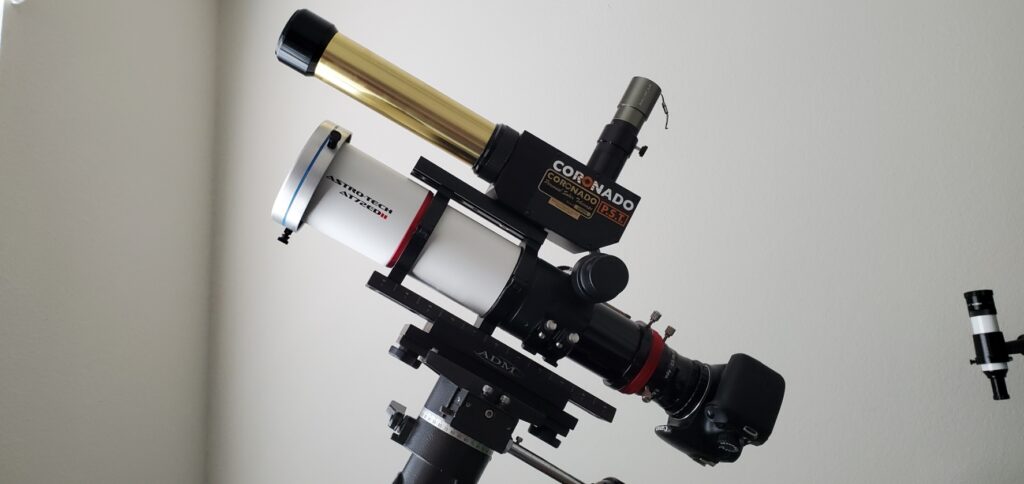
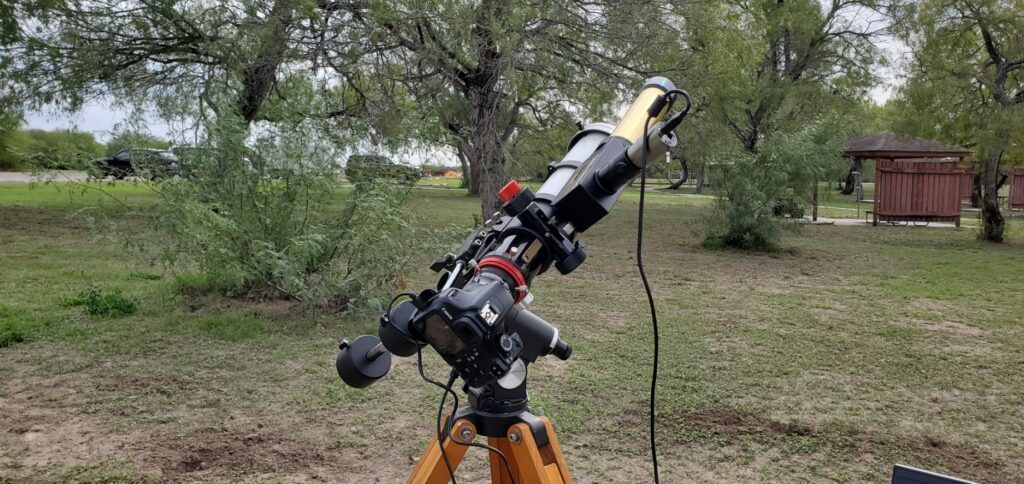
Polar alignment was a bit tricky since I had no way to see Polaris. So, I looked up the latitude of the park and preset the mount altitude setting to roughly that position (a little over 28° North).
But, how to calculate the azimuth? It’s not that difficult if you know the latitude and longitude of the location. I punched the coordinates into an online magnetic north declination calculator, which revealed magnetic north to be about 3.5° East of true north. Then, using a simple orienteering/hiking compass, which has an adjustable dial with an indicator that can be pointed to true north, I was able to point the mount to a position that was reasonably close to the correct azimuth. When taking single shots of the Sun, accuracy is not as important as it is for long exposures of deep space objects.
(Another important point to consider when using a compass is to avoid nearby magnetic sources. Another astronomer at the site was getting different readings on his compass when he attempted to perform an alignment while set up on a sidewalk. We suspect that the rebar in the concrete was somehow causing interference.)
Choke Canyon State Park offers a lot of nice features. There are multiple picnic areas, fishing and boating on Choke Canyon Reservoir, fishing on 75 Acre Lake, RV and camping areas, and a bird sanctuary, as well as other abundant wildlife.
The area around 75 Acre Lake was ideal for viewing the eclipse. We met several other astronomy buffs who were there to witness the event. Children in the distance were chanting “Clouds go away! Clouds go away! Clouds go away!” to no avail, but we appreciated their effort.

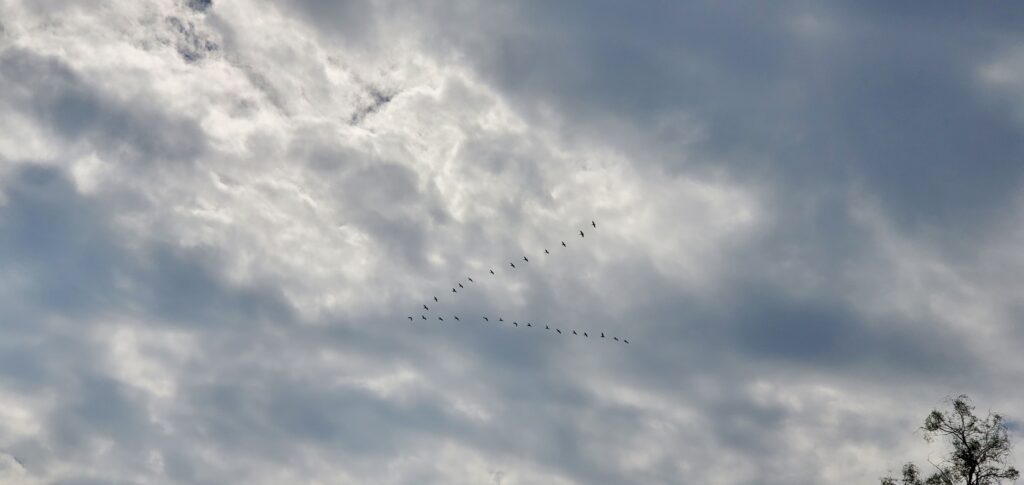
The clouds completely obscured the beginning of the event, but eventually provided enough holes for us to see. It took several tries for me to get the cameras in focus. Below is one of the first successful images that I took.
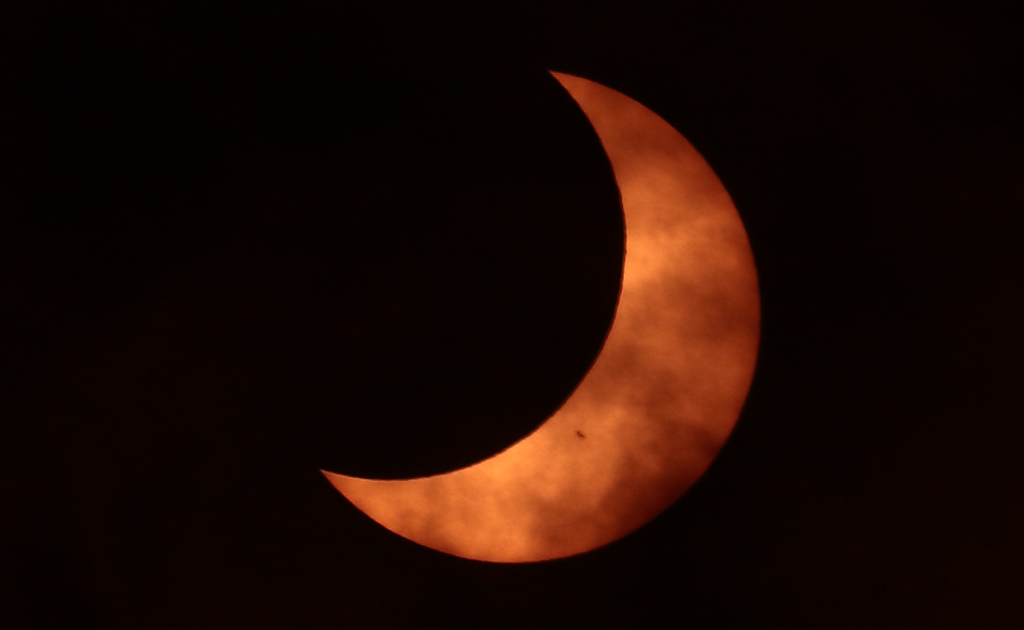
As the Moon approached annularity, the sky became noticeably darker despite the clouds. The temperature, which was already cool, dropped considerably.
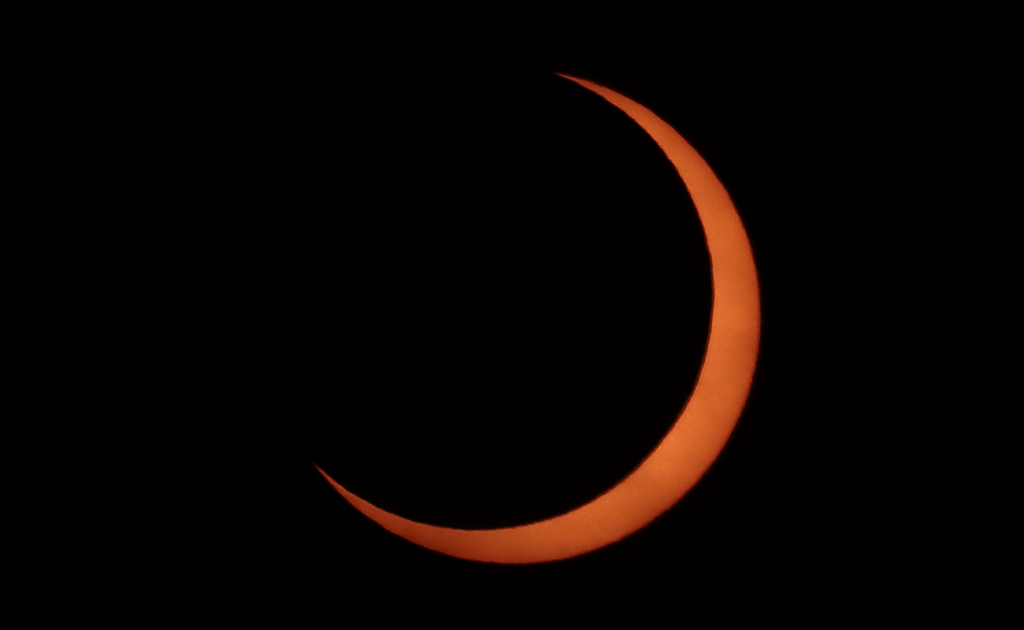
As far as I was concerned, the clouds did not detract much from the quality of the white-light images that I was getting through the AT72EDII and the Canon EOS Rebel T3, but it did obscure a considerable amount of the surface detail of the Sun through the Coronado PST (a dedicated solar telescope).
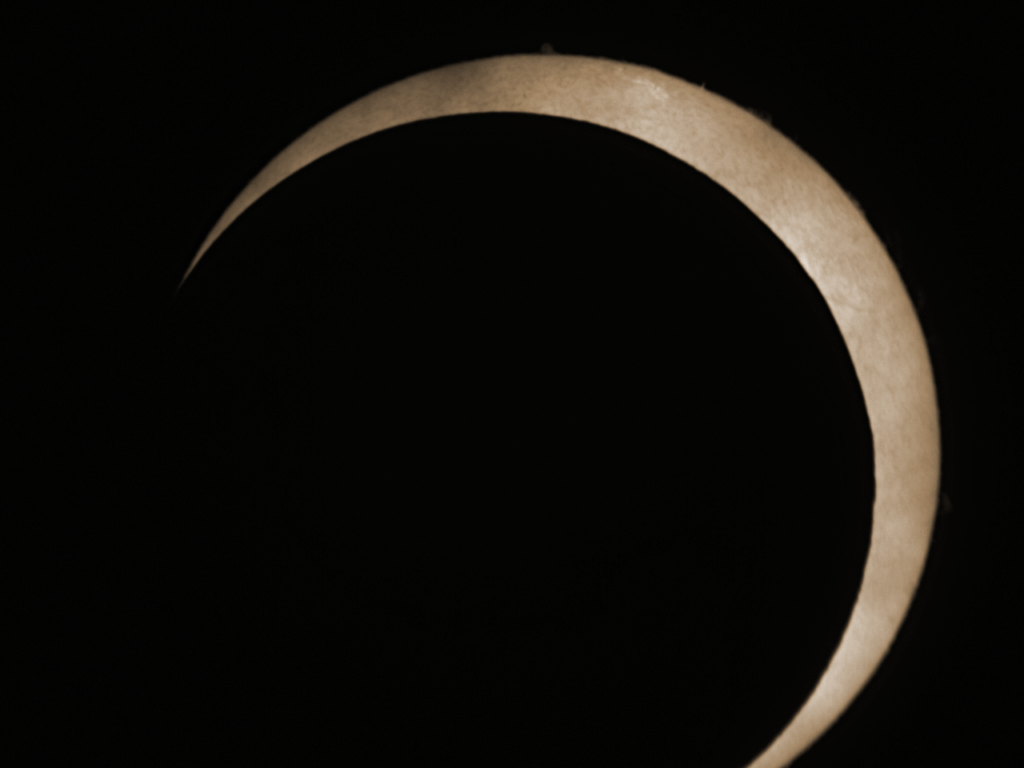
Finally, the Big Moment arrived. At first, I thought that we weren’t going to see it, but an opening appeared, and we got a special treat that would not have been possible in clear skies. The sunlight was refracting off of the upper cloud layer, creating an iridescent effect.
As some of you may know, we lost our younger son, Patrick, in a car wreck back in March 2018. His favorite color was “rainbow” because he like “all of the colors.” Since his death, his mother and I have seen countless rainbows, iridescent clouds, sundogs, and other rainbow phenomena, pictures, and paintings in the places we have visited. We count each one as a special message from Patrick that he is at peace in Heaven.
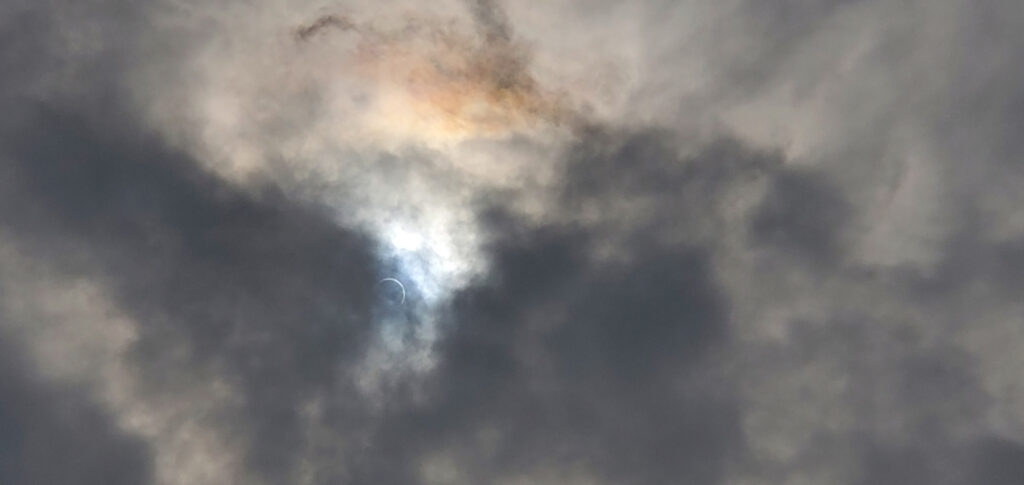
And the clouds had more to offer. In the white-light filter, they created a fiery smoke effect that added to the eeriness of the eclipse.
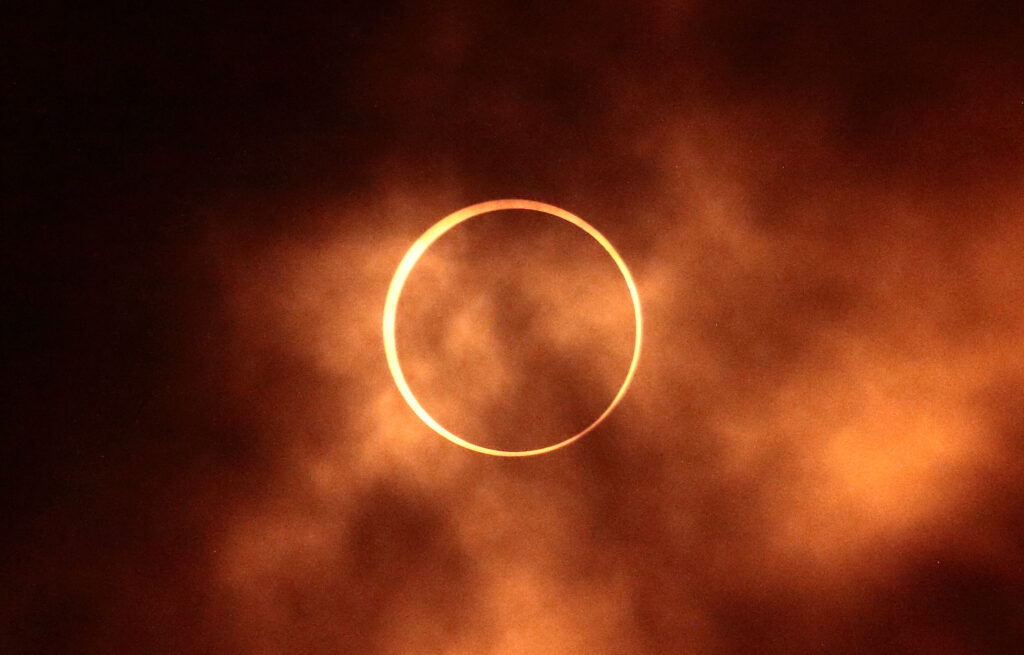

And then, a short time after annularity, the clouds covered up most of the rest of the eclipse event.
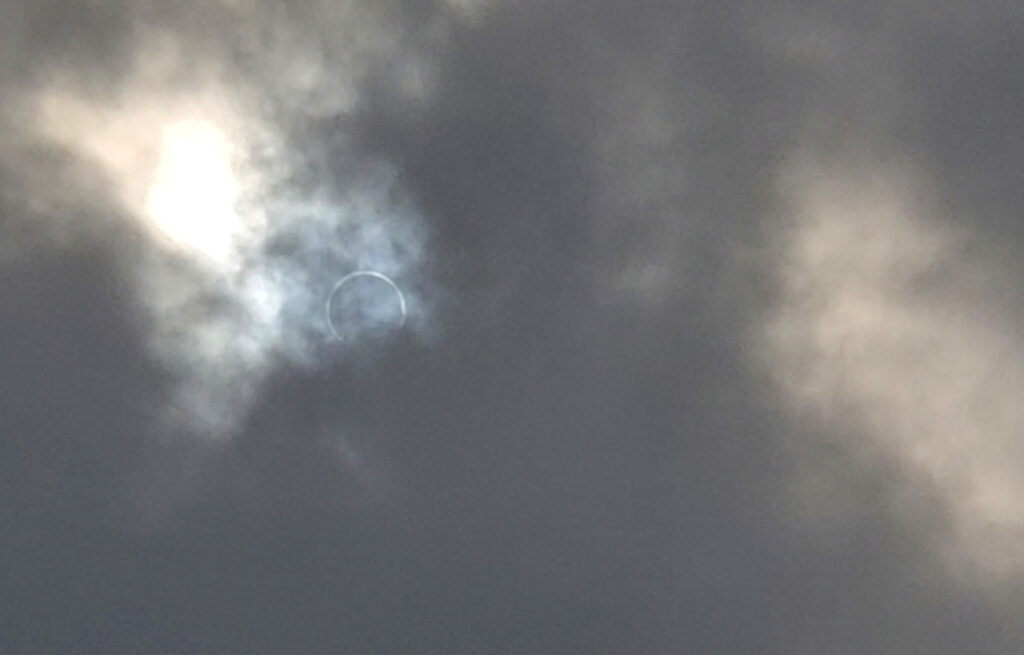
All-in-all, it was a great time. The camaraderie with our fellow astronomers, the beauty of the park, and the overall experience of being outdoors and eating a picnic lunch and seeing lots of interesting wildlife (including bunnies and the fattest wild turkeys I’ve ever seen) made it a memorable experience.
I’m excited at the possibilities of the upcoming total eclipse on April 8, 2024. Here’s hoping for clear skies!

3 comments